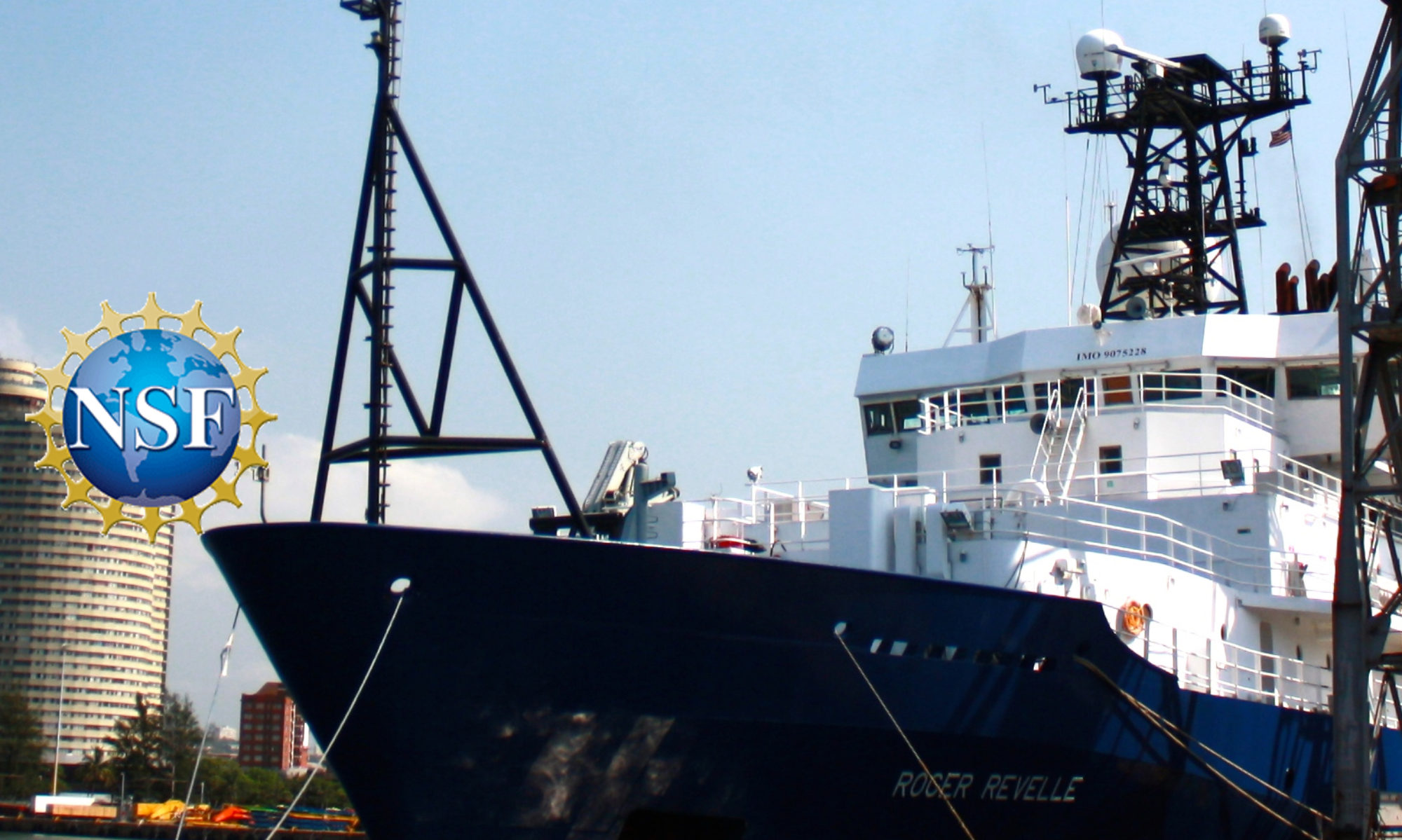By Casey Hearn
Here’s a riddle for you: It’s white as snow, cold to the touch, and melts in the palm of your hand, but put a match to it and watch it burn! You won’t find it on a mountaintop or resting on a glacier, it makes its home in the mud beneath the sea. What on earth could it be?
Our mystery substance is known as methane hydrate, or clathrate, and it forms in seafloor sediments on continental margins all over the world. Over millions of years, the remains of tiny ocean plants and animals cover the seafloor in layers of organic-rich mud that can be miles deep. This material slowly decomposes, either by the metabolism of microbes or by the combination of intense pressure from the weight of sediment and water above and heating from the earth’s interior below. Large amounts of methane gas are produced by this decomposition, and the buoyant bubbles percolate upwards through the sediment towards the seafloor.
Then an odd thing happens to some of the gas. In certain places just below the seafloor, where the temperature and pressure conditions are just right, molecules of methane gas become trapped in a cage of water molecules to form a solid that resembles water-ice. Large accumulations of this substance, known as methane hydrate, fill up the tiny pore spaces between grains of seafloor sediment to create large deposits up to 500 meters thick. Below the hydrate layer, free bubbles moving upwards become trapped and form pockets of gas. As a result, across the many coastal margins of the world’s oceans, vast stores of methane gas are frozen and locked away beneath the seafloor.
The natural process of gas and hydrate formation has been ongoing for many millions of years, but the deposits can be unstable. Due to the narrow range of conditions under which they form, small changes in temperature or pressure can cause instabilities, melting the hydrates and freeing the gas. Most of the gas released naturally occurs in plumes of small bubbles which quickly dissolve into the seawater as they rise towards the surface. But if the gas is released in large quantities, it will vent and rise too vigorously to be dissolved, breaking free at the sea surface to enter the atmosphere.
In the atmosphere, methane acts as an extremely potent greenhouse gas, 80 times more effective than carbon dioxide at trapping heat from the sun during its first 20 years. A large release of methane gas to the atmosphere could quickly raise global atmospheric temperatures and transfer more heat to the oceans. Due to the sensitivity of hydrates to changes in water temperature, this warming would trigger the release of even more methane in a cycle termed a positive feedback loop. In order to make more accurate predictions of the extent of expected global climate change, scientists need to know how much methane is stored in ocean sediments as hydrate and which deposits are vulnerable to rapid increases in water temperature.
On our expedition off the coast of Oregon, we set out to help answer this question by supplementing the inventory of known methane hydrate deposits. Remember the pockets of trapped gas that form below hydrate deposits in ocean sediments? When a pulse of sound traveling through the sediment crosses this boundary its speed changes suddenly and a large amount of energy bounces back. The hydrophones we tow behind our ship receive this reflected sound energy and record it digitally; when this data is processed an image of the sub-seafloor is generated, and the pockets of gas stand out clearly.
I’ve been on the lookout for these hydrate/gas transitions, which we call Bottom Simulating Reflectors, during my time on board and I’m happy to report that we’ve identified quite a few new ones. This expedition has been a phenomenal experience for me: improving not only my abilities as a researcher but also learning how to plan and lead effectively. While the work can be hard and the days are long, the scenery and company can’t be beat. My time at sea always rushes by in a blur. I really love it out here.
— Casey Hearn is a Ph.D. student at the University of Rhode Island
